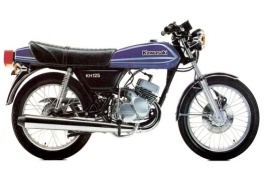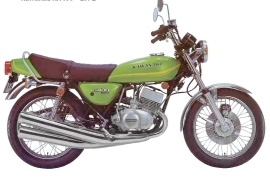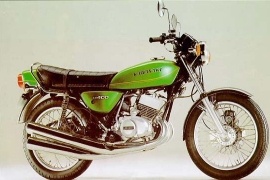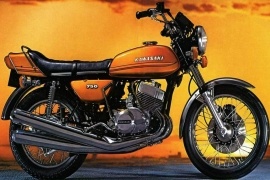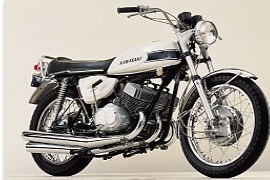KAWASAKI Triple Models/Series Timeline, Specifications & Photos
First production year: 1968
The 1978 Kawasaki KH 125 was created in an era when the Japanese factories dominated the ride-to-work market. Bikes like the Kawasaki KH 125 were meant to survive daily use, enjoy very little maintenance and return 65 mpg at a steady 88.5 Km (55 mph). Even a battered example can still get you home, eventually.
The Kawasaki KH 400 was a 400cc, 2-stroke, street motorcycle manufactured by Kawasaki from 1976 through 1980. The KH 400 was the successor to the Kawasaki S3.
Changes between the S3 and KH 400 was in the lowering of horsepower, color, markings, carburetor settings, handlebar grips, and spark plug. A CDI ignition was added as well as water-resistant brake pads, and three-fuse system adopted.
There`s nothing else like it in the class. The two-stroke, 3-cylinder engine is a jewel. It likes to rev high and long and sounds like no others. The front disc brake makes arrow straight stops with the rear drum. The Kawasaki KH 250 is the simple 250 replacement, but the power is reduced to 26 HP due to the introduction of fewer exhaust systems and the setting of fuel. The geometry and suspension have always contributed to tidy riding on the KH 250. The weight also increased from 148 kg (326 lbs) to 158 kg (348 lbs), but the KH 250 was still remarkably agile and nimble bike.
The story of the 1972 Kawasaki Mach IV H2 750 begins, of course, with the Mach III H1 of 1969, a 500cc two-stroke triple conceived, designed, and built during the latter 1960`s a time when Kawasaki, new to the US market, was looking to elbow its way in. As early as mid-1969, Kawasaki engineers conceived a bigger H1, and within months 650cc versions began circulating. Test mules were refined, with modified frames, disc brakes, and as much suspension tuning as engineers could muster.
When the Kawasaki appeared at 60 x 58.8-mm bore & stroke, it was completely straight forward three cylinders in-line, with a tall alternator/ignition cover adding inches of width on the left, and with its gear primary drive to a 5-speed gearbox on the right. Powerful double leading shoe front brakes, racing rear brake with air scoops always respond smoothly for safe straight line stops.
